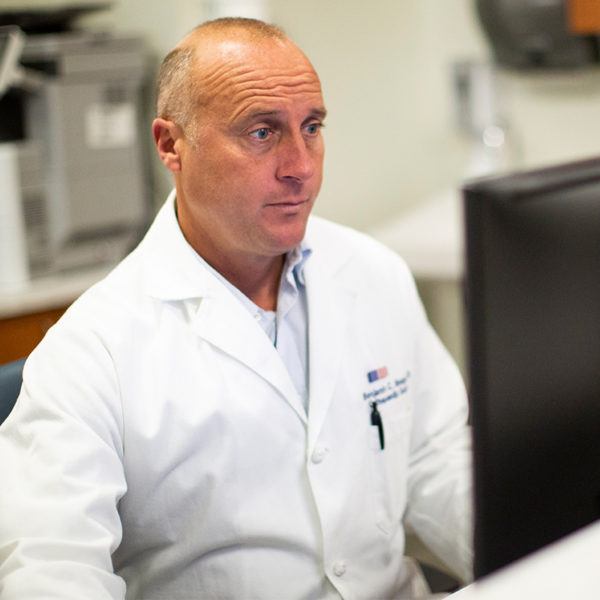Leg Length Discrepancy

Overview
What is Leg Length Discrepancy?
The definition of a leg length discrepancy (LLD) or leg length inequality is when one leg is shorter than the other. Scientists estimate that approximately 40% to 70% of the population has an LLD, but most people don’t even notice it. However, when there is a significant difference between the legs, it can affect posture, how someone walks, cause strain on muscles and hip joints, and change the spine’s shape. An LLD is typically associated with one of three types:
- One leg becomes shorter.
- One leg becomes longer.
- The pelvis becomes tilted.
One major cause of LLD is previously placed hip replacements. While joint replacement surgeons do their best to recreate your hip’s appropriate geometry, occasionally, this will not be achieved at the time of surgery.
Symptoms
Leg Length Discrepancy Symptoms
Unless the LLD is greater than 1/8 inch, it probably will not be noticeable. However, an LLD longer than 1/8 inch may cause a variety of issues such as:
- Pain in the hips, knees, ankle, lower back, or spine
- Pain more severe on one side of the body than the other
- Hips or rib cage forward more on one side than the other
(when laying on your back) - Curved spine / poor posture
- Instability and loss of balance
- Loss of muscle tone in one leg more than the other
- Walking with a limp
- Awkward gate, such as shuffling feet, taking shorter steps, walking slowly or stiffly, waddling, jerky movements, head tilted down or sideways
- Clothes may not fit right
Diagnosis
Leg Length Discrepancy Diagnosis
An LLD diagnosis begins with a physical examination. The patient may be an infant, a teenager, or adult. The doctor takes a detailed medical history of the patient and family, including asking about injuries or illnesses. The doctor will watch how the patient moves, walks and stands, and may order an X-ray, CT, or MRI. Radiography is most accurate but takes more time and is more costly, so it should be used only when accuracy is critical.

Treatments
Leg Length Discrepancy Treatments
The treatment for leg length discrepancy depends upon the patient’s age, the cause, and severity of the LLD. For adults, differences of less than 1/2 inch usually do not need to be treated. Sometimes, a lift (or orthotic) can be put in the shorter leg’s shoe to even it out and relieve the pressure. However, a lift will not address the problem’s cause, so a complete and accurate diagnosis is necessary before choosing any treatment.
When the cause of the LLD is muscles that are chronically involuntarily contracted, neuromuscular education may be most effective. Neuromuscular education means retraining the neuromuscular system to function correctly. It is similar to physical therapy (PT) and may include exercises to strengthen and stretch an injured limb.
If these treatments are not adequate for the patient, then surgery may be an option. Your physician will discuss the risks and benefits of surgery to correct LLD.

Specialists
Leg Length Discrepancy Specialists
No People Found
Testimonials





